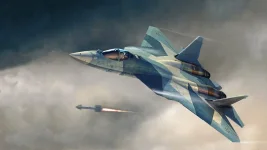- Views: 709
- Replies: 1

The Indian Air Force (IAF) is demonstrating a unique approach to airpower modernization: strategically integrating advanced Israeli technology onto its existing Russian-origin fighter jets. This fusion addresses evolving security threats from Pakistan and China, offering the IAF a distinct advantage in potential conflict scenarios.
The Power of the Rampage
A key example of this integration is the Israeli Rampage long-range supersonic cruise missile. With a reported range of over 250 kilometers, it greatly extends the IAF's ability to strike targets deep within enemy territory, exceeding even the capabilities of the Spice-2000 missile used during the 2019 Balakot strikes against Pakistan. The IAF is integrating the Rampage with its Su-30MKI and MiG-29 fighters, as well as Indian Navy MiG-29K naval fighter jets.Moreover, India is considering large-scale production of the Rampage missile under the "Make in India" program, promoting self-reliance and reducing reliance on imports.
Beyond the Rampage: A Holistic Approach
The IAF's tech integration goes beyond the Rampage. It has successfully equipped its Russian Il-76 transport aircraft with Israeli Phalcon Airborne Warning and Control Systems (AWACS). These systems provide crucial 360-degree radar coverage and act as "force multipliers," greatly improving air campaign coordination. Their importance was first underscored during the 1973 Yom Kippur War, in which they aided Israel in turning the tide of the conflict.To ensure secure communication – especially important in the face of electronic warfare – the IAF has also procured Software-Defined Radios (SDRs) from Israel's Rafael Advanced Defense Systems. These systems enhance communication and coordination between various IAF assets, both in the air and on the ground. This capability was a noted weakness during the 2019 exchange with Pakistan.
The Rationale Behind Integration
This fusion of Israeli technology with Russian platforms provides the IAF with several advantages:- Cost-Effectiveness: Integrating systems onto existing fighters leverages previous investments while updating capabilities.
- Operational Efficiency: Pilots already familiar with Russian platforms can adapt more quickly to these new advanced systems, promoting faster operational readiness.
- Threat Mitigation: The combined benefits of Israeli long-range strike capabilities, situational awareness, and secure communication significantly bolster the IAF's ability to counter evolving threats from Pakistan and China.
It optimizes existing resources and equips the IAF with the necessary tools for power projection and national security in a dynamic regional security environment.


